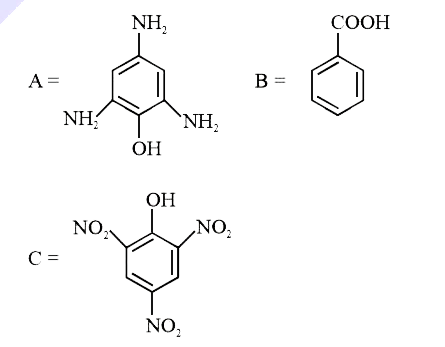When water is added to compound (A) of calcium, solution of compound (B) is formed. When carbon dioxide is passed into the solution, it turns milky due to the formation of compound (C). If excess of carbon dioxide is passed into the solution milkiness disappears due to the formation of compound (D). Identify the compounds A,B,C and D. Explain why the milkiness disppears in the last step.
Step by step video & image solution for When water is added to compound (A) of calcium, solution of compound (B) is formed. When carbon dioxide is passed into the solution, it turns milky due to the formation of compound (C). If excess of carbon dioxide is passed into the solution milkiness disappears due to the formation of compound (D). Identify the compounds A,B,C and D. Explain why the milkiness disppears in the last step. by Chemistry experts to help you in doubts & scoring excellent marks in Class 11 exams.
Updated on:21/07/2023Topper's Solved these Questions
- S-BLOCK ELEMENTS (ALKALI AND ALKALINE EARTH METALS )BOOK - DINESH PUBLICATIONCHAPTER - S-BLOCK ELEMENTS (ALKALI AND ALKALINE EARTH METALS )EXERCISE - CONCEPT BASED QUESTIONS
40 Videos
- S-BLOCK ELEMENTS (ALKALI AND ALKALINE EARTH METALS )BOOK - DINESH PUBLICATIONCHAPTER - S-BLOCK ELEMENTS (ALKALI AND ALKALINE EARTH METALS )EXERCISE - HOT CONCEPTUAL QUESTIONS
1 Videos
- S-BLOCK ELEMENTS (ALKALI AND ALKALINE EARTH METALS )BOOK - DINESH PUBLICATIONCHAPTER - S-BLOCK ELEMENTS (ALKALI AND ALKALINE EARTH METALS )EXERCISE - Assertion reason
12 Videos
- REDOX REACTIONSBOOK - DINESH PUBLICATIONCHAPTER - REDOX REACTIONSEXERCISE - Reasoning Type Questions
4 Videos
- STATE OF MATTER (GASEOUS AND LIQUID STATE)BOOK - DINESH PUBLICATIONCHAPTER - STATE OF MATTER (GASEOUS AND LIQUID STATE)EXERCISE - Ulitmate Preparatory package
20 Videos
Similar Questions
Fill in the blanks in the following statements:
When carbon dioxide is passed through lime water, it turns milky due to the formation of ______.
View SolutionFill in the following blanks with suitable words :
When carbon dioxide is passed through lime water. It turns milky due to the formation of ______.
View Solution
Knowledge Check
When carbon dioxide is passed through clear lime water solution, it turns milky. The milky appearance of lime water is due to
APresence of impurities in lime waterBPresence of insoluble calcium carbonateCPresence of soluble calcium carbonateDCurdling of milk due to lime in lime waterWhen carbon dioxide is passed . through clear lime water solution then it turns milky. The milky appearance of lime water is due to
Acurdling of milk due to lime in waterBpresence of impurities in lime waterCpresence of Insoluble calcium carbonateDpresence of soluble calcium carbonateWhen carbon dioxide is passed through clear lime water solution then it turns milky, The milky appearance of lime water is due to
Acurdling of milk due to lime in waterBpresence of impurities in lime waterCpresence of insoluble calcium carbonateDpresence of soluble calcium carbonate
What is the nature of the solution obtained when carbon dioxide gas is passed into water ?
View SolutionWhen carbon dioxide is passed through lime water, the solution turns milky, but, on prolonged passage, the solution turns clear. This is because
View SolutionWhen carbon dioxide is passed through lime water, a milky white precipitate of ___________is formed.
View SolutionWhen chlorine is passed through concentrated NaOH solution, the compound formed is
View SolutionCompound(s) which will liberate carbon dioxide with sodium bicarbonate solution is/are:

View Solution
